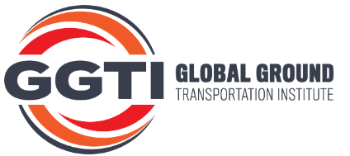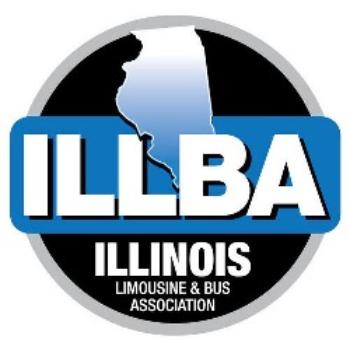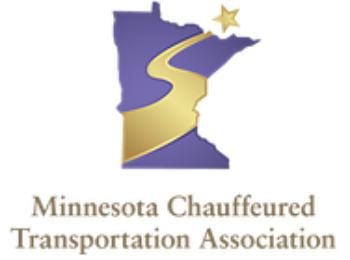NLA News
MEMBER UPDATE
The following updates – 1) DOT Restrictions on Hand-Held Mobile Telephone Use by Drivers of Commercial Motor Vehicles and 2) Developments Regarding Commercial Driver’s License Information System State Procedures Manual, Release 5.2.0 – have been prepared for NLA members by the NLA’s legal counsel, Michael F. Morrone, partner, Keller and Heckman LLP, Washington DC.
I. DOT Restrictions on Hand-Held Mobile Telephone Use by Drivers of Commercial Motor Vehicles
The Federal Motor Carrier Safety Administration and the Pipeline and Hazardous Materials Safety Administration (collectively the “Agencies”) have now amended the Federal Motor Carrier Safety Regulations (“FMSCRs”) and the DOT’s Hazardous Materials Regulations (“HMRs”), respectively, to restrict the use of hand-held mobile telephones by drivers of commercial motor vehicles (“CMVs”). The Agencies have also amended their regulations to implement new driver disqualification sanctions for drivers of CMVs who fail to comply with the Federal restriction and new driver disqualification sanctions for commercial driver’s license (“CDL”) holders who have multiple convictions for violating a State or local law or ordinance on motor vehicle traffic control that restricts the use of hand-held mobile telephones. The amended regulations further confirm that motor carriers are prohibited from requiring or allowing their CMV drivers to use hand-held mobile telephones.
Drivers who violate the aforementioned hand-held mobile phone restriction will confront federal civil penalties of up to $2,750 for each offense and disqualification from operating a CMV for multiple offenses. Furthermore, States will suspend a driver’s CDL after two (2) or more serious traffic violations. Additionally, commercial truck and bus companies that permit their drivers to use hand-held cell phones while driving will face a maximum penalty of $11,000.
The Agencies have concluded that the rulemaking will improve safety on the nation’s highways by reducing the prevalence of distracted driving-related crashes, fatalities and injuries involving CMV drivers. FMCSA research has indicated that use of a hand-held cell phone while driving requires a commercial driver to initiate several steps beyond what is required for using a hands-free mobile phone, such as searching and/or reaching for the mobile phone. That research further confirms that commercial drivers reaching for a cell phone are three (3) times more likely to be involved in a crash or other safety critical event. In this regard, it will be recalled that in September 2010, FMCSA had issued a regulation banning text messaging during the operation of a commercial truck or bus. Moreover, PHMSA had promulgated a companion regulation in 2011 banning texting by hazardous materials drivers.
The new rule banning use of hand-held mobile phones by CMV drivers took effect on January 3, 2012. Significantly, the rule was supported by the American Trucking Associations.
2. Developments Regarding Commercial Driver’s License Information System, State Procedures Manual, Release 5.2.0
The Federal Motor Carrier Safety Regulations (“FMCSRs”) have now been amended to incorporate by reference the most recent edition of the Commercial Driver’s License Information System (“CDLIS”) State Procedures Manual, Release 5.2.0 published by the Association of Motor Vehicle Administrators, Inc. Hence, FMCSA is now requiring all State licensing agencies to use this recent edition of the Manual to develop the process required to transmit, receive, record, and update information on a CDLIS driver record. That information includes, but is not limited to:
A) the CDL holder’s physical description;
B) such individual’s commercial and non-commercial driving status;
C) the driver’s medical certification status; and
D) the driver’s convictions, disqualifications and accidents.
Though the rule’s effective date was December 5, 2011, compliance therewith is not mandated until January 30, 2012. The Manual outlines the standard administrative practices required of the 50 States and the District of Columbia when participating in the CDLIS. Additionally, the 13 Canadian provinces and territories and the Mexican General Directorship of Federal Motor Carrier Transportation will also adopt the Release 5.2.0.
Release 5.2.0 addresses changes that were made as part of the modernization effort to make CDLIS more efficient in handling the increasing number of driver records and data transactions. Among those changes are:
A) the addition to the driver history record exchanged via CDLIS of medical certificate information, driver self-certification of operating status, information regarding variances, and exemptions from medical requirements;
B) the creation of a new nationwide driver license restriction code of “V” to be used on the license document and CDLIS messages to ensure that law enforcement would ask the driver to provide variance information during a traffic stop;
C) the introduction of a new CDLIS message that will allow the FMCSA to quickly locate a driver’s State and license number after a crash; and
D) discussion of the rules and procedures for recording and transmitting the new medical certification data that is being added to CDLIS driver records.
FMCSA believes that uniform practices among the States can only be ensured by incorporating by reference the latest Manual (Release 5.2.0).
MEMBER UPDATE
NLA News Alert: 75 Mile Exemption Removed
On February 1, 2010, the Department of transportation ("DOT") issued a Federal Register notice amending the Federal Motor Carrier Safety Regulations ("FMCSRs") to require that motor carriers operating commercial motor vehicles ("CMFs") designed or used to transport between 9 and 15 passengers (including the driver), in interstate commerce for direct compensation comply with the safety regulations regardless of the distance traveled. See Safety Requirements for Operators of Small Passenger-Carrying Commercial Motor Vehicles Used in Interstate Commerce, 75 Fed. Reg. 4996-5002 (Feb. 1, 2010). Specifically, this rule makes certain FMCSRs applicable to the operation of such vehicles when they are operated within a 75-air-mile radius (86.3 statute miles or 138.9 kilometers) from the driver's normal work-reporting location. Motor carriers, drivers, and the vehicles operated by them wil be subject to the same safety requirements imposed upon such vehicles when they are operated beyond a 75-air-mile radius. This action is requied by the Safe, Accountable, Flexible, Efficient Transportation Equity Act: A Legacy for Users (SAFETEA-LU).
This rule is effective May 3, 2010. Motor carriers must be in compliance with this rule no later than June 1, 2010.
This alert summarizes the February 1 notice that requires motor carriers operating CMVs designed or used to transport between 9 and 15 passengers (including the driver) in interstate commerce for direct compensation comply with the regulations contained in 49 C.F.R. parts 390, 391, 392, 393, 395 and 396, regardless of the distance traveled. This update should be used for summary purposes only and does not constitute legal advice. Specific legal or regulatory question should be addressed by your counsel.
- Marking Requirements - The notice will require motor carrier compliance with the general requirements under part 390, including but not limited to vehicle marking requirements. Motor carriers must ensure that every self-porpelled CMV they operate is marked as specified in paragraphs (b), (c) and (d) under 49 CFR 390.21, including among other things, the requirement to mark the vehicle with the USDOT Number and the legal name or a single trade name of the motor carrier operation the vehicle. The final rule eliminates the exception und Sec. 390.3(f)(6)(ii) which permitted small passenger-carrying vehicles operated within a 75-air-mile radius of the normal work reporting location to be marked only with teht USDOT Number and to exclude the legal or trade name.
- Alcohol, Drugs, Drowsy - These motor carriers are required to ensure that each of their drivers meets all of the minimum qualifications for interstate CMV drivers prescibed in part 391, including physical qualifications and maintaining records to document compliance. The rules in part 392 regarding driving of CMVs also are applicable. Part 392 requirements include general prohibitions against the use of alcohol, drugs and other substances while operating a CMV or operating a CMV while ill or fatigued. The motor carrier must ensure that its drivers comply with rules governing operation of CMVs at railroad grade crossings, partices to ensure a CMV is safelystopped, fueling precautions and other generally prohibited practices such as transporting unauthorized persons, towing or pushing loaded buses. The FMCSA is not making the commercial driver's license and controlled substances and alcohol testing requirements applicable to operators of small passenger-carrying CMVs, because section 4136 does not change the existing non-application of those requirements that results from the statutory definition of CMV in 49 U.S.C. 31301(4) used for those programs. Consequently, the passenger-carrying threshold for CDL and controlled substances and alcohol testing reuqirements remains at 16 passengers (including the driver).
- Hours of Service - Under part 395, motor carriers must ensure that their drivers comply with the applicable hours-of-service requirements for motor carriers of passengers. Most, if not all, operators of small-passenger carrying vehicles within the 75-air-mile limit and their drivers will be covered by the short-haul operations prvisions of 49CFR Sec. 395.1(e)(1). If the driver operates within a 100-air mile radius of the normal work-reporting location and the driver returns to that location and is release from work within 12 consecutive hours after starting work, then the driver must not drive more that 10 hours after 8 hours off duty and must have at least8 consecutive hours off duty separating each 12 hours on duty. Drivers covered by these short-haul provisions are not reuqired to maintain a record-of-duty status (log book). However, the employer must maintain for 6 months records of each driver's time of both reporting for and being released from duty andthe number of hours on duty each day. In accordance with 49 CFR 395.5, any drivers who operate beyond a 100 air-mile radius from the normal work-reporting location must not drive more thant 10 hours after 8 consecutive hours off duty or operate CMVs after being on duty more than 15 hours, following 8 consecutive days if the motor carrier operates CMVs every day of the week (70-hour rule). In addition, 49 CFR 395.8 requires those drivers who operate 100 miles beyond the normal work reporting location to document the number of hours on duty and the number of hours driving and record his/her status.
- Inspection Program - Each motor carrier is required under part 396 to have a systematic inspection, repair, and maintenance program for the CMVs it operates adn to ensure that vehicles are in safe and proper operating condition al all times. They are also required tomaintain records to document complaince with these rules. Motor carriers are required to ensure that each vehicle is inspected at least once every 12 months by a qualified inspector/mechanic and that any motor carrier employee who is responsible for the adequacy of any brake-related inspections, repair or maintenance work meets certain minimum qualifications. They must also maintain records to document compliance with thes rules.
- New Entrant - The 2003 final rule required all motor carriers that operate CMVs designed or used to trasport between 9 and 15 passengers for direct compensation to complete a motor carrier identification report (Form MCS-150), and to obtain a USDOT Number. This included carriers operating within the 75-air-mile exclusion. 49 CFR 390.3(f)F(6). All such carriers that have fulfilled the requirements of the 2003 final rule whould already be include in FMCSA's census of motor carriers and would have been considered new entrants and subject to the limited new entrant review to ensure their compliance with the very limited requirements of the rule (i.e., maintaining an accident register and marking of their CMVs). Any carriers that have already registered will be subject to safety requirements such as driver qualifications and hours of servic eand be required to have appropriate safety management controls in place to ensure compliance with the FMCSRs. However, any carriers not previoulsly registered will be considered new entrant motor carriers. Those carriers will be covered by the revised New Entrant Safety Assurance Process recently adopted by the Agency. 73 FR 76472 (Dec. 16, 2008).
- Safety Fitness Procedures - Part 385 of the FMCSRs establishes procedures to determine the safety fitness of a motor carriers, to assign safety ratings, to take remedial action when required, and to prohibit motor carriers receiving a safety rating of "Unsatisfactory" from operating a CMV. As a result of this final rule, motor carriers operating smaoll passenger-carrying CMVs within a 75-air-mile radius of the driver's normal work-reporting location are now covered by the same safety fitness procedures and standards used to evaluate other interstate motor carriers. This means that the motor carriers affected by this rulemaking are subject to compliance reviews and will receive safety ratings. Those that receive and "Unsatisfactory" safety rating will be prohibited from operating CMVs to transpor tpassengers in interstate commerce. In addition, these motor carriers will be ineligible to contract or subcontract with an Federal agency for transportation of passengers in interstate commerce.
- No Exemption for Stretch Limousines - The final rule does not exempt stretch sedan, SUV or super stretch sedan limousines.
.jpg)
.png)



